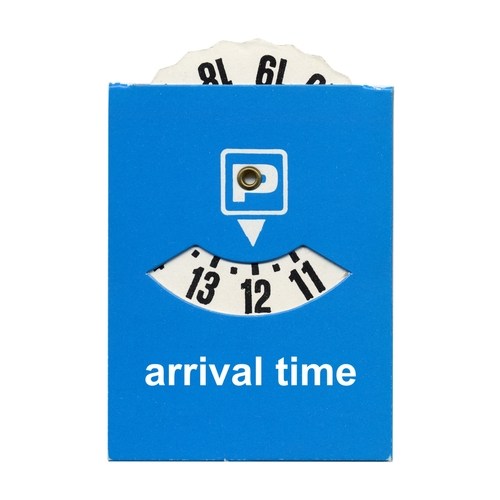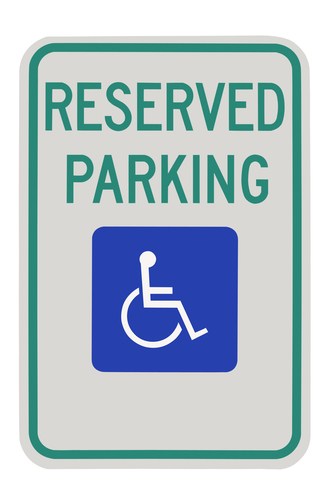Parking restrictions are rules that govern where and how you can park your car. They are put in place to ensure the safety and convenience of everyone who uses a particular area.
Pay for parking
Sometimes you have to pay to park your car. Paying for a parking space has become very normal, especially in city centers. Pay for parking can be a restriction in both on- and off-street parking situations.
Parking meter
Parking meters manage payment for the parking space. In most on-street parking situations where you have to pay for parking, you will find a parking meter. A parking meter is a device to collect money for parking. In most situations there is a time limit to park at a parking meter. The classic parking meters only allow cash for payment method. Parking meters only serve one parking space at a time. Sometimes people park at a meter that still contains money from the previous person who parked there. This means there is still time on the meter and the person can park for free for this period of time. Normally, this isn't allowed but happens anyway. It's also not allowed to put money if it's not your car that's parked in the space.
Smart parking meter
Nowadays you see more and more smart parking meters. The difference between the classic parking meters and the smart parking meters, is that smart parking meters give you as a customer more payment options. For example, you can pay by phone or by credit card.
Pay and Display or Parking Pay Station
Pay and displays means that the person who parked the car, has to walk to the nearest parking machine and buy a ticket. The ticket is placed on the dashboard of the car and enforcement officers audit by looking in vehicles for receipts. So you pay for a parking ticket and display it on the dashboard of the car. The printed ticket often says where you parked, who the parking operator is, the date and time you printed the ticket and the expiry time. Usually you can pay an certain amount of money to park for a certain amount of time, and you as a customer can choose how much you want to pay and therefor how long you want to park your car. These pay and display systems can be used both on- and off –street. The difference between a Pay and Display meter and a normal parking meter as discussed before, is that these Pay and Display systems serve multiple parking spaces, as a normal parking meter only serves one parking space. Also, people cannot take advantage of parking spaces that have time left on the meter, since everybody has to have their own ticket displayed in the car.
Time limits
Sometimes you are only allowed to park for a limited amount of time or only between certain hours of the day. This is usually corresponded with signs at the parking place. There are also situations where you have to pay for parking between certain hours of the day, and that the other hours are free. These zones are called Controlled Parking Zones. There is also a difference between short term parking spaces and long term parking spaces. At short term parking spaces you are only allowed to park for a short period of time, in contrast to long term parking spaces. Short term parking is typically used near businesses to provide parking for customers while encouraging turnover.
Disk Parking

On some places where a parking time limit is set, the time limit is monitored with the use of parking disks. The owner of the car that is parked, uses this disk to indicate the time when he parked his vehicle. He then places the disk on the dashboard. Patrolling enforcement agents can now see at what time he parked the car and therefor for how long the car is parked. Disk parking is used at places where there is a time limit set for parking, but no charge.
Coupon parking
Coupon parking is a combination of disk parking and pay-and-display parking. The car owner has to purchase a book with coupons in advance. When he parks on a parking space with a time limit, he has to tear off a coupon and fill out the current date and time. Then he places it on his dashboard so enforcement officers can see what time he has parked the car. The difference between coupon parking and disk parking, is that a disk is reusable and a coupon can only be used once.
Alternate-side parking
Alternate-side parking refers to a traffic law which states on which side of the road you are allowed to park. Sometimes there are also time limits. An example: On this side of the road you are not allowed to park between 9 am and 5 pm. This parking restriction is commonly communicated with traffic signs.
The parking sign displayed on the right side means: No parking on this side of the street.
Disabled parking space
Disabled parking spaces, also known as handicapped parking spaces, are spaces that are reserved for people with a disability. You’re only allowed to use these parking spaces if you have a permit. You can request a disabled parking permit, also called Blue Badge, at the city council. You qualify for a disabled parking permit when your mobility is affected due to illness, age, infirmity or disability.
ADA
ADA is short for Americans with Disabilities Act. This act gives people with disabilities equal opportunities in public facilities, employment, transportation, etcetera. The Americans with Disabilities Act gives civil rights protections to individuals with disabilities similar to those provided to individuals on the basis of race, colour, sex, national origin, age, and religion. ADA requires that 1 out of every 25 parking spaces is assigned to a handicapped driver, and 1 out of every 6 handicapped parking spaces must be van accessible. For parking lots with over 1000 parking spaces the rules are a bit different: Here 1 out of every 100 spaces must be accessible for handicapped drivers.
For parking facilities, this means that the facility should be accessible to people with disabilities, for example people in wheelchairs, and every parking lot should have reserved parking spaces for handicapped people. Businesses can be fined for not providing these spaces and people that aren’t handicapped can be fined for using them. There are a number of guidelines that the handicapped parking spaces have to meet. For example, it must be easy to identify a disabled parking space. An ADA handicapped space can be
 identified with the international symbol of accessibility: the white person in a wheelchair on a blue background. This sign must be visible to everyone. Sometimes, the symbol is painted on the pavement as well. The same picture is usually also printed on the disabled parking permit, which users have to display on their dashboard so enforcement officers know that they’re allowed to use the space. Unfortunately, disabled parking permits and – spaces are often abused by people who aren’t allowed to use them.
identified with the international symbol of accessibility: the white person in a wheelchair on a blue background. This sign must be visible to everyone. Sometimes, the symbol is painted on the pavement as well. The same picture is usually also printed on the disabled parking permit, which users have to display on their dashboard so enforcement officers know that they’re allowed to use the space. Unfortunately, disabled parking permits and – spaces are often abused by people who aren’t allowed to use them.
Handicapped parking spaces must be the spaces closest to the entrance of the building or facility and should be on ground level. They must be close to the entrance because many people that use the handicapped parking spaces are unable to walk, can’t walk that far or have trouble walking. The only exception is when the closest parking spaces are on an uneven surface or on a slope that would make it difficult to manoeuvre a wheelchair through. The route from the parking space to the entrance of the building must be accessible and there cannot be any stairs or other obstacles. Plus, a handicapped parking space must be wide enough to fit a vehicle plus additional space for a wheelchair to exit the vehicle. For a vehicle parking space there must be an additional 5 feet access space and for a “van accessible” space it must have 8 feet of access space. This access space is needed for the wheelchair or scooter to exit the car.
Residential parking space
Residential parking spaces are only meant for people who live in that particular residential area. This means that the spaces are not available for visitors. For example, people who live in the city center are allowed to park their car, but people who visit the city to go shopping, aren’t allowed to or have to pay to park. Normally residents have to request a parking permit by their city council. They have to place this permit on their dashboard so it’s visible to the enforcement agents. Only residents get the parking permit, so only residents are allowed to park at these parking spaces. Other people will get fined. There are variations to this type, e.g.b employee parking spaces.
Permit
A permit is anything that allowes a driver to park is a designated area: Also referred to as permission or credential. This can be decel, hangtag, RFID, virtual (databe record), etc. Permitless Parking is a parking system that relies on license plate recognition to read pre-registered license plates that serve as parking permits or access credentials. Credentials allow access to a facility or to park in a certain on-street area (i.e. resedential parking pass) and references to access control systems.





